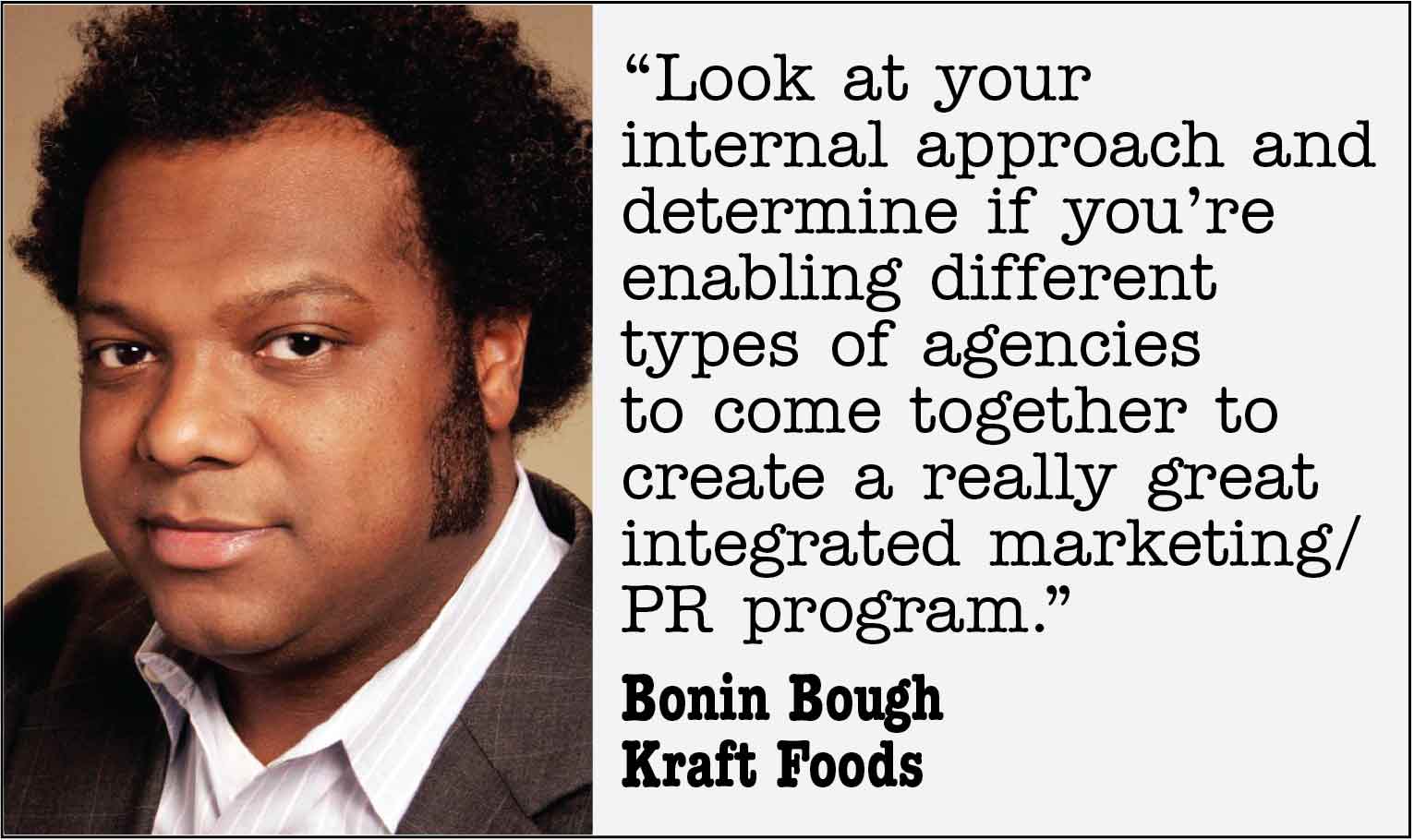With the steady rise of digital and social channels, organizations are constantly searching for the most effective people and tools to deliver great digital/social results.
This need has touched off a kind of war, if you will, between PR agencies that have developed digital and social capabilities; ad agencies that have done the same thing; and pure-play digital/social shops that compete with both for business.
It’s a cutthroat competition. At the PRSA Counselors Academy conference held in May 2012 in New Orleans, the ability to offer digital services, including app development and mobile expertise, were hot topics of conversations among owners of small and midsize PR agencies. For them, expanded digital/social offerings are a matter of survival in a difficult environment.
Also difficult is the choice corporate communicators have to make between a PR agency and an interactive agency for digital/social services. PR News checked in with PR agency and corporate communicators who have experience with pure-play digital shops to find out what the differences are, and their takes on choosing one over the other.
 |
For Mary Henige of General Motors, the decision to use a PR agency or a pure-play shop for digital/social work parallels her philosophy of discovering great, new communications pros. “You need a solid public relations foundation—with knowledge of a variety of PR facets—and then you layer on the digital and social expertise,” she says. Thus, Henige prefers to work with PR agencies that possess strong digital/social capabilities. “Our agencies do good work,” she says.
Henige contends that there are many independent digital consultants on the market that are “far from knowing what they’re doing,” making more appearances on the digital conference circuit than actively practicing their skills. “I get at least a dozen unsolicited pitches from these consultants per week,” says Henige. “Their services are so narrowly focused, I’d have to hire a hundred of them to get a campaign done.”
At GM, integration is critical between PR and marketing, and PR and social media. “Digital and social media shouldn’t be separated from what we do, which is engaging with audiences,” she says.
Then again, she can see why some marketers would use a pure-play digital shop, since they don’t engage like PR does. “I think it depends where you’re coming from,” says Henige.
TALENT ISSUE
 |
For Bonin Bough, VP of global media and consumer engagement at Kraft Foods, whether digital/social jobs are handled by a PR agency or a pure-play is not the issue, “it’s the talent that sits inside those entities,” he says.
“Both PR agencies and boutique digital shops bring a unique perspective to the table,” says Bough, who headed up digital and social media at PepsiCo before moving to Kraft in Feb. 2012. To properly put that perspective into play is the client’s job, he says. “Look at your internal approach and determine if you’re enabling different types of agencies to come together to create a really great integrated marketing/PR program,” says Bough.
So at Kraft, PR and marketing work with all types of digital agencies. “This allows for a very holistic program,” says Bough, who adds that there shouldn’t be a separation of church and state, so to speak, now that the marketing/PR line is blurred.
THE HYBRID MODEL
For PR agencies, the digital/traditional PR line has been blurring for some time. Full-service PR agency Shift Communications started calling itself a “hybrid” back in 2006, says Todd Defren, principal at Shift (and author of the popular PR-Squared blog). On the Shift Web site, “Social media planning and execution” is at the top of the services list. That said, the vast majority (about 85%) of Shift’s clients have the agency do both PR and social/digital work.
Like many full-service agencies, Shift has bolstered its digital/social services with top-notch staff. Over time, Defren says he’s noticed an interesting, and opposite, staffing trend: Shift has been providing interactive shops like Razorfish with more traditional PR help, but there came a time when the calls from those shops asking for help stopped. “So I got in touch with one, and they told me, ‘We love you guys, but we’re hiring our own PR people,’” says Defren. The integration continues.
In any case, Defren has some advice for organizations looking for digital/social solutions, whether from a PR or pure-play agency:
1. The agency you pick should wow you with their creativity.
2. The agency should also wow you with its understanding of paid, earned and owned media.
3. The agency should wow you with an integrated pitch. Don’t settle for an agency with the best media relations or the best Web site design. “It’s the total package that counts,” says Defren.
And don’t forget another alternative: developing digital/social expertise from within. At GM, Henige says its longtime agency, Fleishman-Hillard, did a social media audit for them a few years back. “Then we were able to fill in the blanks internally,” she says. You know the old idiom: “If you want something done right, do it yourself.”
Then again, the person who said that probably didn’t have to worry about SEO.
CONTACT:
Mary Henige, [email protected]; Bonin Bough, [email protected]; Todd Defren, [email protected].
Follow Scott Van Camp: @svancamp01
